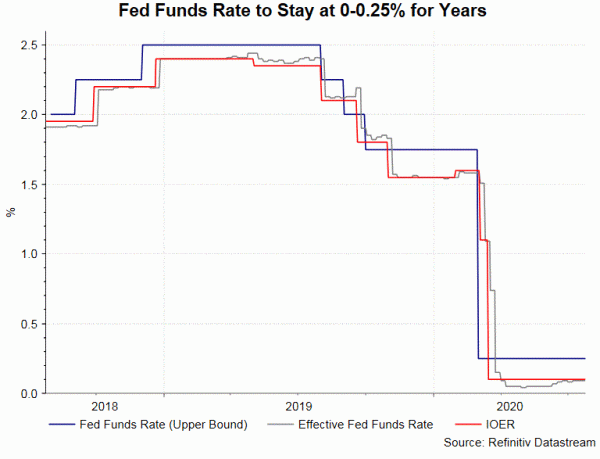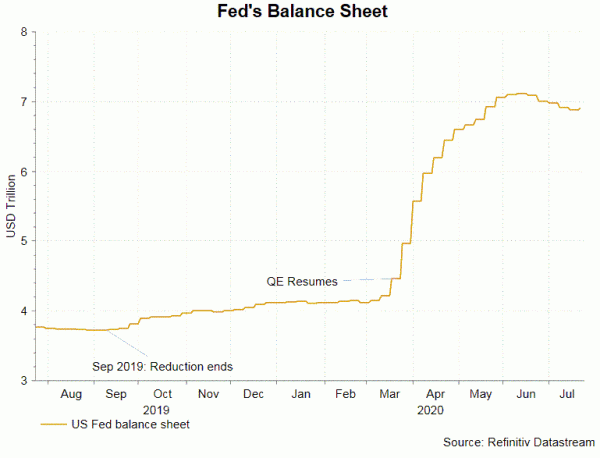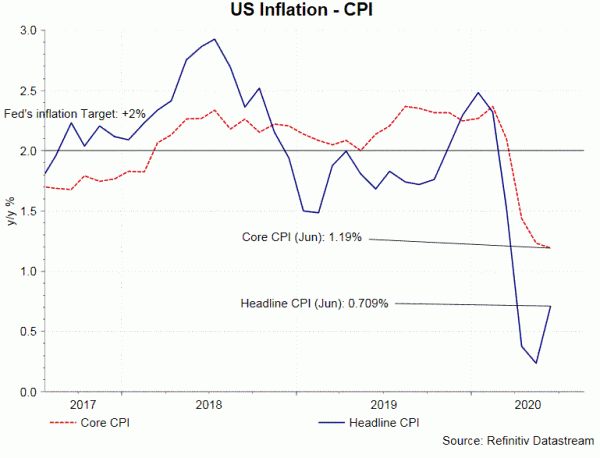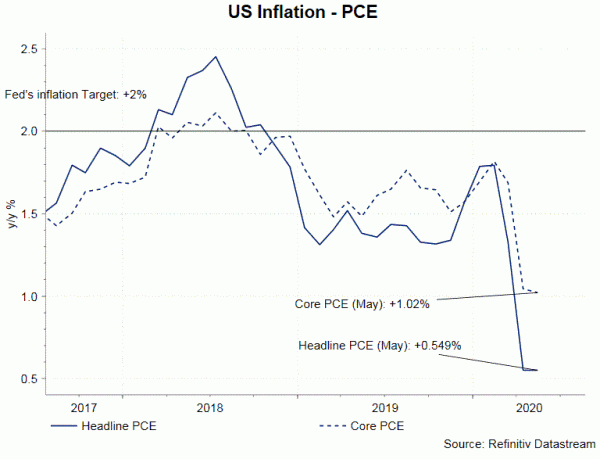The upcoming FOMC meeting aims at preparing the market for changes in the monetary policy in September. At the meeting this week, the Fed will keep its policy measures unchanged at this week’s meeting, i.e., the Fed funds rate will stay at 0-0.25%, while asset purchases (QE) will be kept at a monthly pace of US$80B for Treasuries and US$40B for MBS. The forward guidance will remain intact, with the Fed pledging to maintain the policy rate until “it is confident that the economy has weathered recent events and is on track to achieve its maximum employment and price stability goals”.

The Fed is running out of monetary policy tools as the policy rate has fallen to the zero lower bound (ZLB). The members are reluctant to adopt negative interest rates. Going forward, the monetary policy stance will remain accommodative with the measures focusing on the change to an outcome-based forward guidance on the interest rate outlook, transition to traditional asset purchases and introduction of an average inflation targeting famework.
Concerning the forward guidance, the June minutes has already revealed the intention of tying the guidance to inflation outcome. We expect the Fed will indicate something like the first rate hike would not come until the economy achieves both full employment and inflation of 2%. Full employment could be linked to Fed’s NAIRU estimate which currently is 4.1%. According to the Fed economic projections published in June, median core PCE inflation estimates are 1%, 1.6% and 1.7% in 2020, 2021 and 2021, respectively. Some forecasts suggest that US inflation would not return to +2% at least until 2025. A forward guidance tied to inflation and employment is sending a dovish signal that exceptionally low interest rates will stay unchanged for the years ahead.
Recall that in June, the Fed noted that it was planning, “over coming months”, to “increase its holdings of Treasury securities and agency residential and commercial mortgage-backed securities at least at the current pace”. However, we notice that the Fed has tapered its purchases over the past weeks. We therefore expect the FOMC keep the monthly pace of net purchases of Treasury at US$80b and MBS at US$40B in June but continue to indicate the possibility of expansion in coming months. In previous meetings, the Fed suggested that the objective of asset purchases is to “sustain smooth market functioning, thereby fostering effective transmission of monetary policy to broader financial conditions”. As market functioning is restored, we believe a change to this reference needed. For instance, the Fed might note that the purpose of asset purchases is to increase policy accommodation and support economic recovery.

The Fed has been exploring the possibility of adjusting its inflation target since last year. Having adopted a point level inflation target of 2% since 2012, policymakers are considering to a move that would let inflation run above 2%. It appears that most members are in favor of adopting an average inflation target, aiming for an inflation rate above 2% in good times to offset inflation below 2% in recessions. We expect to hear more on this in September.

The Fed prefers to wait until September for important announcements because these will be accompanied with updated economic projections and median dot plots. Policymakers will also hope to wait for completion of the policy framework review and gather more information about the economic situation amidst resurgent coronavirus cases since the June meeting. Moreover, the Congress is expected to pass more fiscal stimulus by early August. The magnitude would also affect the Fed’s new measures.


 Signal2forex.com - Best robots Forex sy famantarana
Signal2forex.com - Best robots Forex sy famantarana




